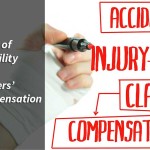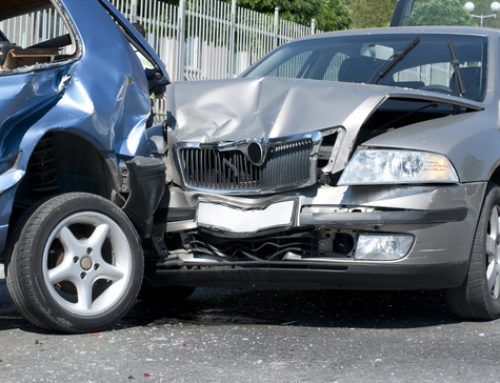Serious in-flight injuries are statistically rare, however, they do occur to passengers while using an airline. There are many airline passengers each year that suffer minor, severe, and even fatal injuries caused by slip and fall, falling baggage from overhead compartments and severe turbulence among other things. Those passengers who are injured may be entitled to compensation for their injuries. These claims may be brought against an airline, airline employees, manufacturers of the aircraft, aircraft service companies, even the Federal Aviation Administration (FAA).
Causes of In-Flight Injuries
The most common of in-flight injuries result from items falling out of overhead bins. According to one FAA estimate, there are approximately 4,500 passengers injured each year from falling baggage and other items. Injuries vary from lacerations, contusions, concussions and other types of physical damage.
Another cause of injury is rolling food carts that are under the control of the flight attendants. It is these carts that can injure limbs and even knock people seated in the isle on the head as they pass. These carts can be very heavy and can cause injuries rather easily if one is not warned of their movement in the aisles.
Others may be injured while moving about the cabin to the lavatory or to visit with other passengers. If movement throughout the cabin is permitted, a person might slip on an item left in the aisle or in front of the lavatories. Some have been injured when an attendant or other passenger has fallen onto them while in their seats.
Turbulence also causes a number of in-flight accidents every year as well. Recently, there have been reports of planes being diverted to other airports as they flew through a patch of rough air and some passengers were unbelted and thrown from their seats. There are nearly 100 passengers each year who are injured by turbulence, most were not wearing seatbelts at the time they hit the turbulence. Some of these injuries were very severe; broken bones, paralysis and a few fatalities.
Can I be Compensated for Airline Related Injuries?
The specific legal remedies available to passengers who were injured on or while boarding airplanes depends on several factors. The main questions to be answered are who and/or what was the proximate cause of the injuries sustained. Injuries can be caused by someone’s negligence, a product liability or even an act of God.
Negligence Claims
If the injuries were caused by an accident due to the actions or omissions of an airline employee, a pilot, maintenance worker, ground crew member, or flight attendant, then a claim for negligence may be pursued. In a typical negligence claim, the injured party must show that the airline employee failed to act in a reasonably careful manner, that the employee was not careful, and that it was this carelessness that caused the injuries to the party bringing suit.
The Common Carrier Standard
Airlines are included in a legal classification called “common carriers”, these are businesses that transport the general public and charge for said transportation. It is these laws that imposes more stringent duty of care on these common carriers. Airlines, taxis, busses and other common carriers must use a higher degree of care, even the “vigilance of a very cautious person” in order to protect their paying passengers from potential risks. This higher degree of care is also expected of the airline’s employees. It is important to note that federal government inspectors are not held to this standard. The legal issues related to U.S. Revised Statutes, Title 1983, governmental immunity for government workers acting under the color of law, will not be discussed at length, but will appear later in this article.
Airlines and their employees are held to this heightened duty of care to passengers while the passengers are embarking/disembarking the plane and while traveling onboard the aircraft. Once a passenger leaves the airplane that duty of care is ended and the airline cannot be held responsible for any injury in the jetways or terminals.
Negligence Examples
Airline employees can be negligent either an action or an omission, something that is a breach of the special duty of care discussed above. By affirmatively doing an act, like leaving an object in the middle of the aisle that causes a passenger to trip and fall. An act of omission, or failing to do an act, like not properly securing an overhead compartment that opens unaided and dumps items on a passenger’s head. Airlines may also be found to be negligent if they fail to provide proper training to employees. In addition, if the airline does not have proper policies in place to safeguard their passengers they might be found negligent.
Product Liability Claims
Not all in-flight injuries are the direct result of an airline employee’s negligence or omission. There are times when the airplane itself is unsafe or mechanically fails to function as designed and could be the result of a defective part or material. Defective workmanship also would come under this classification of claims. If an airline passenger is injured by defective aircraft, aircraft parts or defective equipment, they may have a claim for damages under product liability laws against not only the airline, but possibly the manufacturer of the defective part. For example, if a design defect causes an overhead compartment latch to come apart while the plane is in flight and a passenger is injured by falling baggage, they may have a claim against the manufacturer of the parts in question. An attorney who specialized in personal injury would be able to set a plan in place to identify which company and which persons were responsible to having a defective product in service causing injury.
Turbulence and “acts of god.”
An airline generally cannot be held liable for accidents that occur due to “acts of god,” that is, natural events that cannot be predicted nor prevented. Turbulence is an example of what an act of God might be. Airlines use state of the art weather prediction equipment and other ways to anticipate what Mother Nature might have in store along a flight path. As long as the airline is reasonable in their assessment and implementation of weather avoidance, they most likely would not be liable for injuries sustained while passing through turbulence. The ‘reasonable’ standard applies here, if there were not reasonable efforts made to avoid rough air, or if the pilot ignored such warnings then a claim for negligence might be able to move forward. In these cases it is important to consult an attorney to determine if there is negligence that caused injuries while on the airplane.
Negligence claims against the FAA.
The Federal Aviation Agency (FAA) controls the air traffic in and around the United States. This includes planes in the air and on the ground at airports. If an FAA employee was careless and acted in an unreasonable manner which caused injuries to an airline passenger, a lawsuit against the FAA and its employee might be successful. For example, if an air controller was not paying attention and two taxiing airplanes bumped into each other on the tarmac causing injuries to a passenger, then that passenger may be able to sue the FAA for negligence. As long as sovereign immunity has been waived by the government for negligence under those particular circumstances, that is. Because the FAA is a federal agency, and as a general rule, the government is immune from suit, special rules and procedures will need to be followed to have a successful claim. These procedures will likely place time limits shorter than the conventional statutes of limitations in negligence cases. If the federal government is involved you will need to deal with an attorney who understands these special requirements.
Consult an Attorney
Because airline injury situations have many possible causes and entities to consider when suing for negligence, it is important to have a lawyer who understands your circumstances and injuries. Being injured while in-flight is a terrible experience and some injuries become worse because it may take time to get the injured person to appropriate medical care, depending on the type of injury. Attorneys who specialize in injuries will be able to assist you in seeking proper medical care and making a successful claim for damages as a result of the airlines’, airline employee’s, or other associated entities’ negligence.













